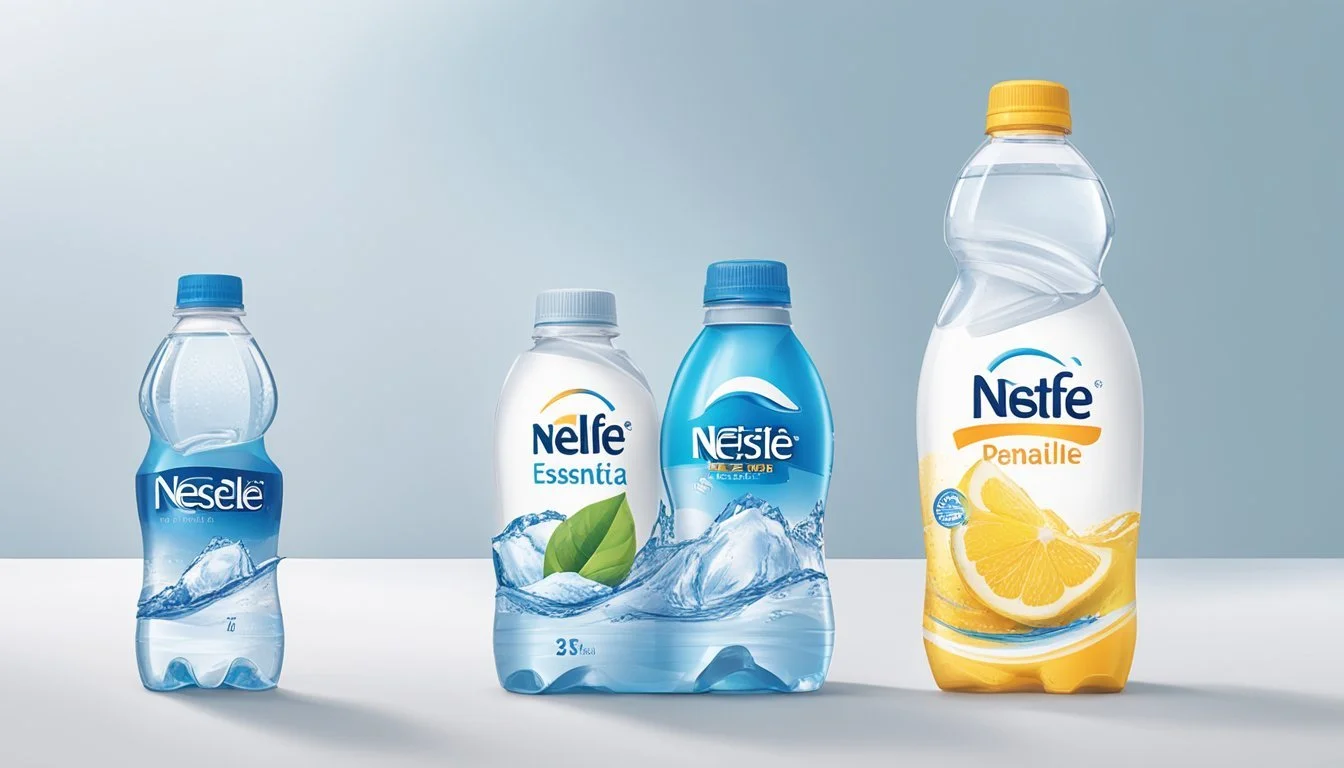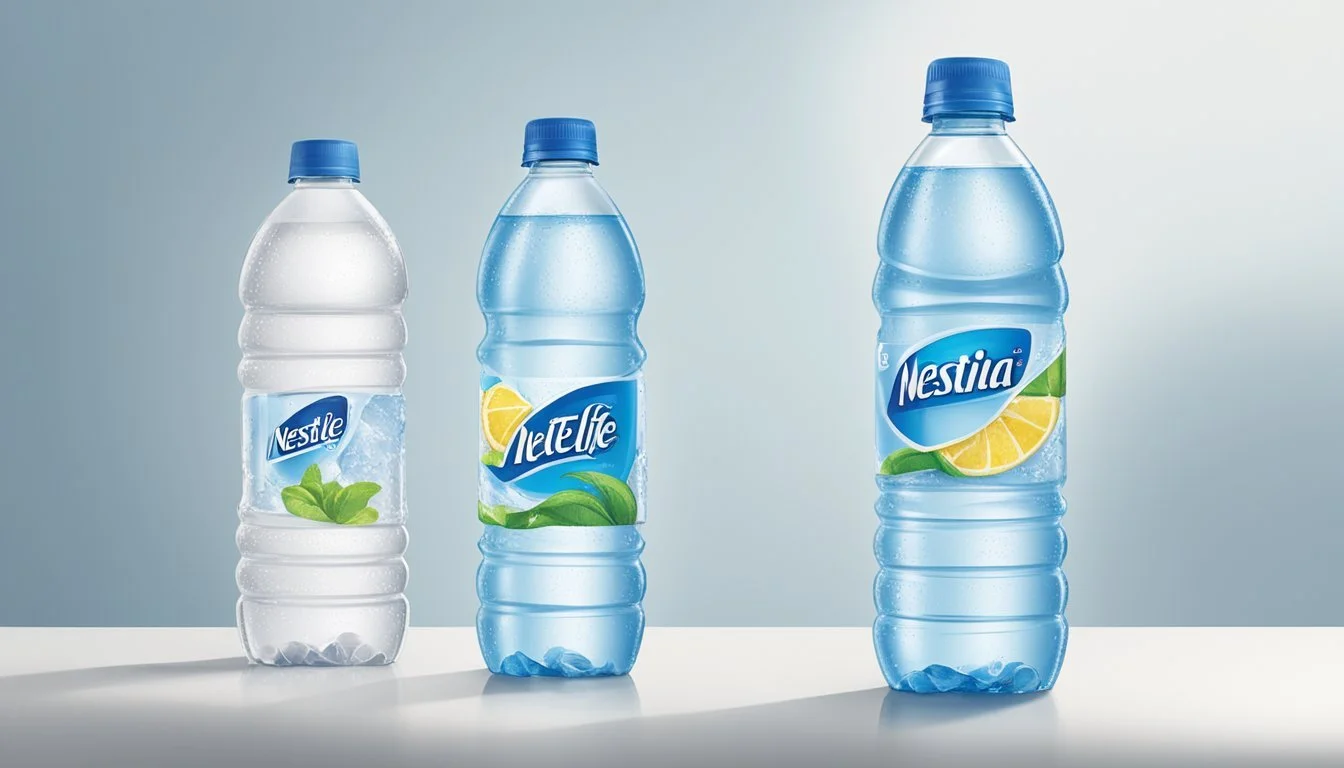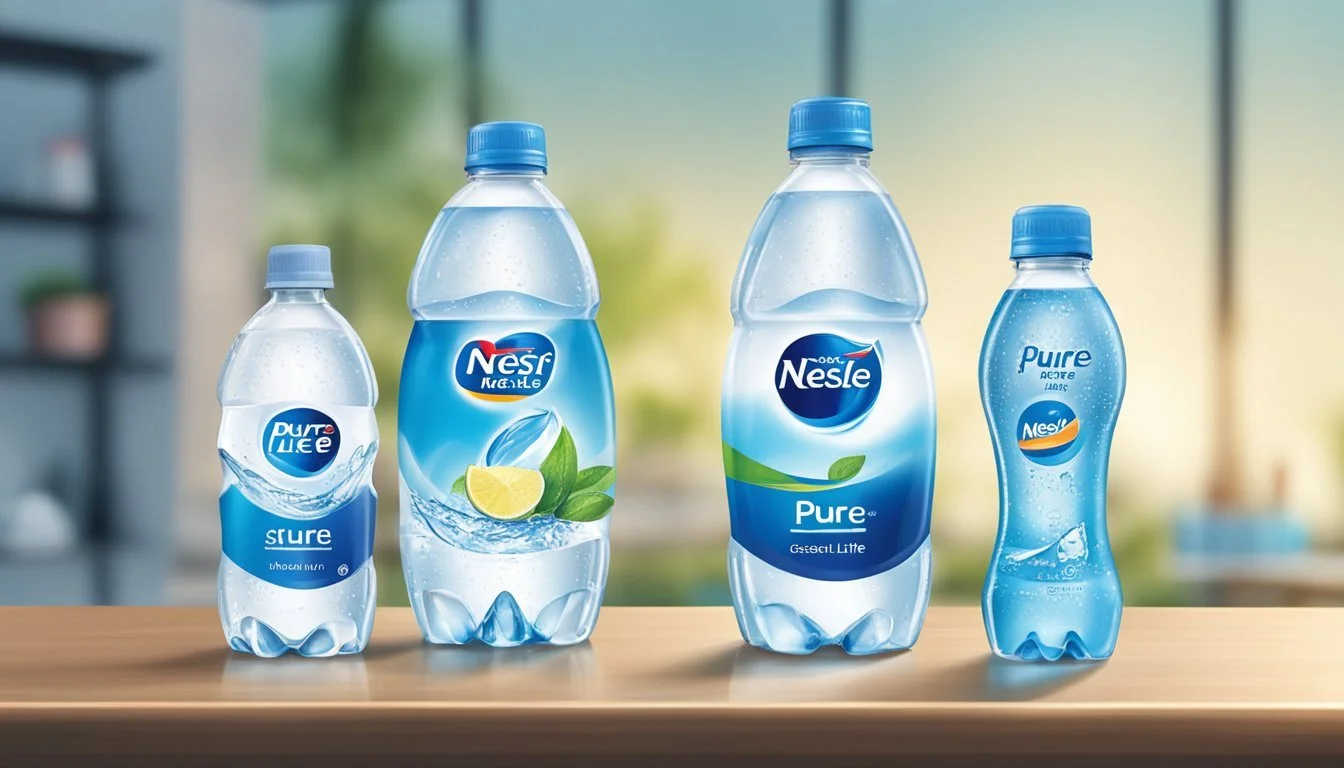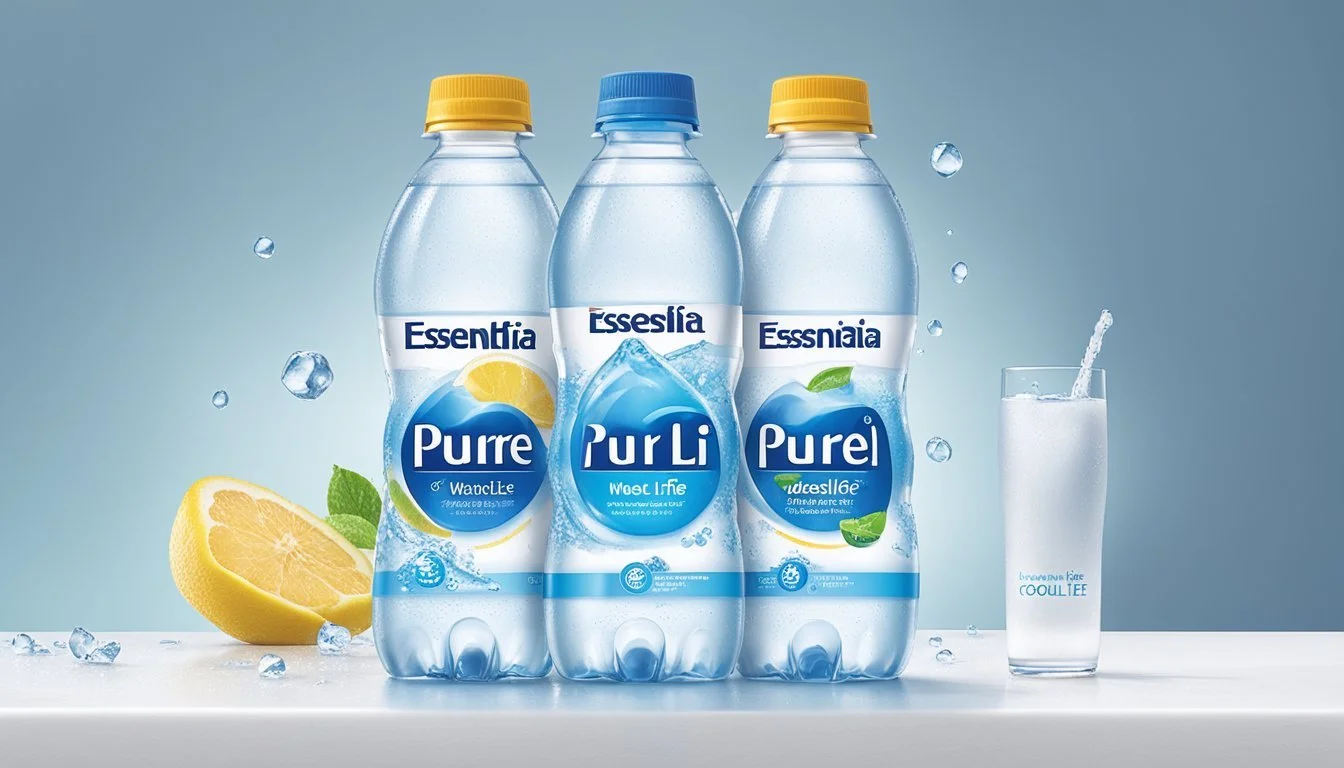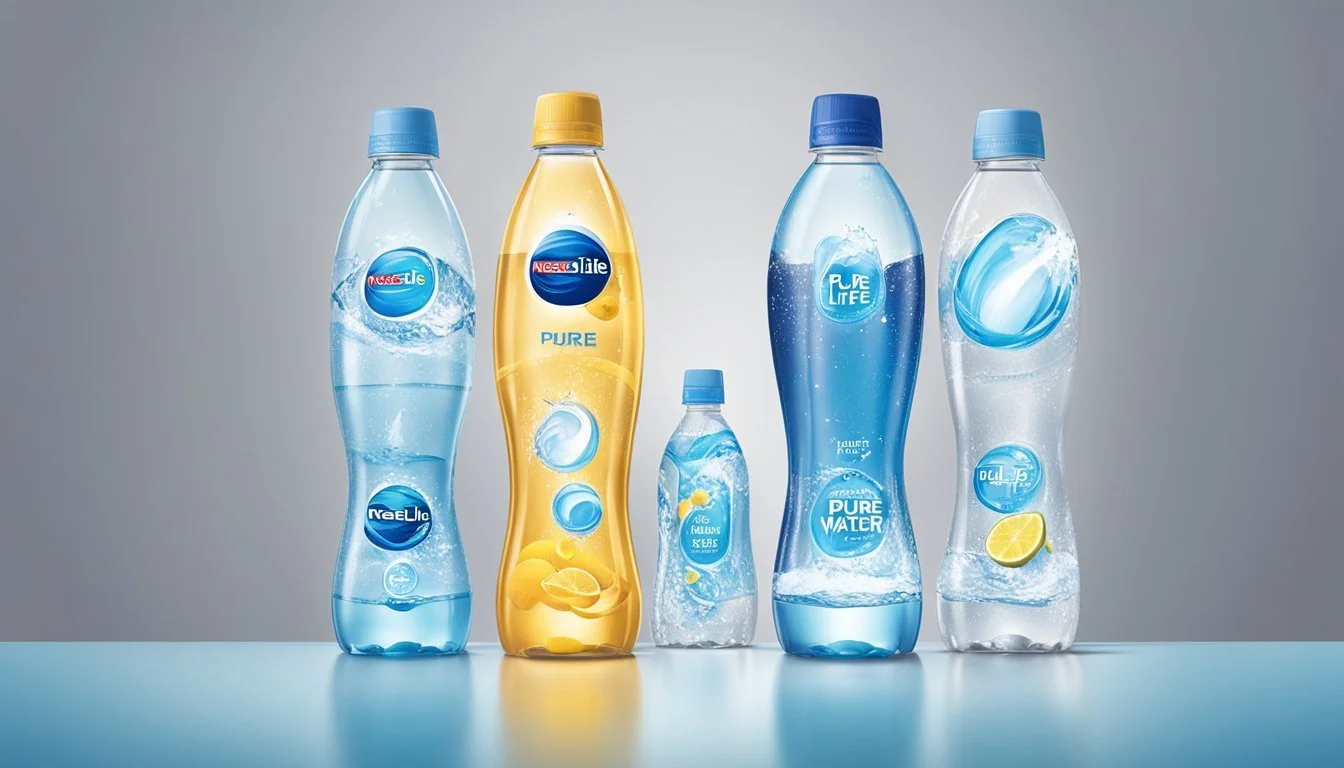Essentia vs. Nestlé Pure Life
Comparative Analysis of Bottled Water Quality
When it comes to choosing bottled water, consumers often evaluate based on purity, taste, and the processes involved in treatment and filtration. Essentia and Nestlé Pure Life are two prominent brands in the bottled water market, each with its own approach to producing water that's marketed as being cleaner or healthier than tap water. Essentia prides itself on its ionization process that purportedly yields a higher pH level, potentially tapping into the public's interest in alkaline diets. Meanwhile, Nestlé Pure Life, which is produced by the world's largest bottled water corporation, focuses on providing consistent taste and quality by blending and purifying water sources.
The debate between which water is better, Essentia or Nestlé Pure Life, often hinges on these differentiating factors. While some consumers are drawn to Essentia for its unique ionization process that removes bitter-tasting acidic ions, others prefer the wide availability and reliable taste profile of Nestlé Pure Life. Choosing the right one often depends on personal values and taste preference. With an ever-growing consciousness about health, wellness, and the environmental impact of bottled water, this comparison not only sheds light on personal choice but also reflects broader trends in consumer behavior.
Bottled Water Basics
When selecting bottled water, consumers face options ranging from purified to spring water, each with unique properties due to their sources and treatment processes.
Understanding Bottled Water
Bottled water is a broad term encompassing several types of water sold in bottles. The significant differences between these types often relate to the source of the water and the treatment it undergoes. Purified water, for instance, is typically sourced from tap water or groundwater, but it undergoes processes such as reverse osmosis, distillation, or deionization to remove impurities and minerals. Alkaline water is another type which, after purification, has minerals added for alkalinity and is believed by some to provide health benefits due to its higher pH. Mineral water, in contrast, retains naturally occurring minerals and is usually sourced directly from a mineral spring or aquifer.
Typical Sources of Bottled Water
The source of bottled water can greatly influence its taste, mineral content, and purity:
Spring Water: It comes from an underground aquifer and flows naturally to the earth's surface or is collected through a borehole tapping the aquifer.
Groundwater: Similar to spring water, but it may not necessarily flow to the surface naturally and is often pumped from wells.
Water Type Source Common Treatments Characteristics Purified Water Tap or groundwater Filtration, reverse osmosis, distillation, deionization Minimally mineralized, often used as a base for flavored or functional waters Spring Water Underground aquifer Filtration, UV/ozone disinfection Contains natural minerals, may have subtle flavors from the source’s geological properties Mineral Water Mineral springs, aquifers Limited treatment, carbonation may be added Naturally contains minerals, often carbonated, and not permitted to have minerals added to it Alkaline Water Various, then artificially mineralized After purification, re-mineralized to increase pH Has a higher pH than regular drinking water
Each type of bottled water is monitored for quality and safety, with spring water and mineral water often celebrated for their natural purity and trace mineral content.
Essentia and Nestlé Pure Life Overview
This section provides a detailed look at two prominent bottled water brands, Essentia and Nestlé Pure Life, assessing their distinct profiles and market positions.
Profile of Essentia
Essentia Water is recognized for its ionized alkaline water, which has a higher pH than regular drinking water. Founded over twenty years ago, Essentia utilizes a proprietary process that includes purifying municipal water, then adding a blend of electrolytes before ionizing. These steps enhance taste and promote better hydration, according to the brand's claims. The brand was acquired by Nestlé USA, positioning it within a larger portfolio of water brands.
Profile of Nestlé Pure Life
Nestlé Pure Life is produced by Nestlé Waters, which is the largest bottled water company globally. The water undergoes a multi-step process of filtration and is enhanced with a balanced mix of minerals. It is marketed as a safe, clean, and refreshing beverage, suitable for everyday consumption. However, Nestlé Pure Life has faced criticism for being comparatively average in taste and quality among its peers. Despite this, it remains a widely distributed and accessible bottled water option for consumers.
Water Quality and Composition
When comparing Essentia and Nestlé Pure Life bottled waters, it's important to assess their water quality and composition, focusing on pH levels, mineral content, and the presence of contaminants.
pH Levels and Alkalinity
Essentia Water is well-known for its high pH, typically marketed as over 9.5, claiming that its ionization process contributes to increased alkalinity and differentiates it from many other bottled waters. This high pH level might appeal to those seeking alkaline water for its purported health benefits.
In contrast, Nestlé Pure Life maintains a neutral pH closer to 7, which reflects the standard for most drinking water. Its pH level is regulated to be within a range that is considered optimal for hydration without the additional emphasis on alkalinity.
Mineral Content and Electrolytes
Essentia Water prides itself on the inclusion of electrolytes such as sodium, calcium, and potassium, added for taste and to enhance its hydrating properties after it undergoes reverse osmosis to remove impurities and contaminants. The result is water with a notable amount of beneficial dissolved solids but free from harmful substances.
Nestlé Pure Life also includes a variety of minerals in their composition. This bottled water undergoes a multi-step filtration process that involves demineralization and re-mineralization, ensuring the presence of beneficial electrolytes and minerals while maintaining the purity of water.
Presence of Contaminants
Both brands comply with strict FDA regulations to minimize the presence of contaminants such as lead, heavy metals, and harmful chemicals. Studies have found the presence of PFAS chemicals, often referred to as 'forever chemicals,' in various bottled water brands, but specific data for Essentia and Nestlé Pure Life varies and depends on testing by individual batches. The commitment of both brands to reduce these contaminants includes employing processes like reverse osmosis, which significantly reduces the presence of PFAS and dissolved solids that may pose health risks.
Taste and Hydration Experience
When comparing Essentia and Nestlé Pure Life bottled waters, one must assess both the flavor profiles and the hydration efficacy that each brand offers.
Flavor Profiles
Essentia water is known for its smooth and clean taste due to its proprietary ionization process. This process removes bitter-tasting acidic ions, resulting in pH levels that are typically above 9.5, giving it a distinctive, crisp taste that might be preferred by those looking for a smooth experience free of heavy mineral flavors.
On the other hand, Nestlé Pure Life undergoes a multi-step filtration process and is enhanced with a light blend of minerals for taste. This process yields a neutral flavor, which can be described as plain and refreshing. While some consumers find this taste profile to be rather average, it is a commonly accepted standard for bottled water.
Hydration Efficacy
Essentia boasts about its water enhancing better hydration through its alkaline process, which it claims can lead to more effective rehydration. While scientific studies specific to Essentia's formula are limited, some consumers report feeling refreshed and replenished more effectively with alkaline water in general.
Nestlé Pure Life, being purified water with added minerals, aims to provide a balanced level of hydration suitable for daily intake. The added electrolytes can assist in replenishing the body after regular activities. Its widespread availability makes it a convenient option for consumers looking to maintain adequate hydration levels.
Health and Safety Standards
Essentia and Nestlé Pure Life bottled waters both comply with strict health and safety standards, but they differ in their approaches to filtration and added minerals. Understanding the specifics of regulatory compliance and potential safety concerns is crucial in assessing which brand may be better from a health and safety perspective.
Regulatory Compliance
Essentia Water boasts its own proprietary filtration process that it claims not only meets but exceeds the standards set by the U.S. Environmental Protection Agency (EPA). They utilize microfiltration, reverse osmosis, and ultraviolet exposure to remove contaminants, followed by the addition of electrolytes for taste.
Nestlé Pure Life also adheres to the EPA's standards for bottled water. They implement a multi-step process of filtration and ensure safety by monitoring for a range of substances, including BPA, arsenic, mercury and other contaminants. Additionally, Nestlé Pure Life bottles are made of PET plastic which does not contain BPA.
Bottled Water Safety Concerns
The safety of bottled water is regularly scrutinized for the presence of contaminants. Essentia and Nestlé Pure Life both actively test for and work to limit contaminants to levels that meet or fall below the EPA’s regulated limits. For instance:
Arsenic: Maximum levels are set by the EPA at 10 ppb (parts per billion); both brands endeavor to significantly undercut this maximum in their products.
Mercury: The EPA’s maximum level for mercury in drinking water is 2 ppb. Both brands maintain levels below these standards through rigorous testing.
BPA: While not a direct water contaminant, BPA-free packaging is important for consumer safety. Essentia bottles are BPA-free, and as stated earlier, Nestlé Pure Life uses BPA-free PET plastics.
Consumers can generally expect that bottled water sold in the United States, including Essentia and Nestlé Pure Life, should not pose any major safety concerns when it comes to regulated substances. Both brands actively commit to regular testing to ensure their bottled water is safe for consumption.
Environmental and Economic Impact
When comparing Essentia and Nestlé Pure Life, it’s important to consider their environmental and economic footprint, primarily through the lens of plastic bottle usage and the broader implications for sustainability and water rights.
The Use of Plastic Bottles
Essentia and Nestlé Pure Life bottled waters are packaged in plastic bottles, a material known for its convenience and durability, but also for its significant environmental drawbacks. The production of these bottles consumes fossil fuels and generates CO2 emissions. Once used, these bottles can take upwards of 400 years to decompose, contributing to landfill waste and oceanic pollution if not properly recycled.
Aspect Impact on Environment Economic Considerations Production High CO2 emissions; resource-intensive Costs associated with materials and manufacturing processes Disposal Long decomposition; potential pollutant Recycling and waste management expenses Recycling Reduces waste; energy-intensive Revenue from recyclable materials; investment in recycling infrastructures
Sustainability and Water Rights
Sustainability measures and water rights are crucial when assessing the impact of bottled water brands like Essentia and Nestlé Pure Life. Both brands utilize purification processes, but the sourcing of the water, as well as the rights to this water, often come under scrutiny. Sustainable practices are essential to ensure that the bottling process does not negatively affect local water tables and that communities’ access to water is not compromised.
Essentia: Focuses on ionized alkaline water that undergoes a purification process involving microfiltration, reverse osmosis, and ultraviolet exposure.
Nestlé Pure Life: Emphasizes purified water, which involves a multi-stage process including demineralization or reverse osmosis.
Both companies must navigate the balance between providing bottled water for consumer convenience and ensuring fair use of water resources, often challenging in the face of increasing demand and environmental concerns.
Company Sustainability Efforts Water Rights Considerations Essentia Proprietary purification process; recycling initiatives --- Nestlé Pure Life Practices aimed at reducing environmental footprint Criticism for impact on local water resources
In the context of these brands, addressing the use of plastic bottles, promoting sustainable practices, and respecting water rights are essential for a positive environmental and economic impact.
Brand Positioning and Consumer Choice
In the bottled water industry, brand positioning significantly influences consumer choice, with factors like market presence and public perception playing pivotal roles.
Market Presence and Sales
Essentia Water has established itself as a premium brand focusing on the health-conscious segment. Their water, claiming higher pH levels, is marketed towards those seeking purported hydration benefits. Despite Essentia's specialized market, Nestlé Pure Life, being a product of the world's largest bottled water corporation, Nestlé Waters, boasts extensive global distribution, appealing to a broader audience. Both brands compete in a market alongside giants like Coca-Cola, which owns Dasani, and PepsiCo, the company behind Aquafina. Other notable competitors include luxury brands like Fiji, Smartwater, and Voss, as well as eco-conscious options like LIFEWTR and Flow Water.
Public Perception and Trust
Essentia’s acquisition by Nestlé might influence consumer trust owing to their clashing brand identities—Nestlé Pure Life has faced criticism regarding its source and taste profiles. In contrast, Essentia is often associated with positive attributes in the wellness community. Brand trust can also be influenced by environmental stewardship and ethical sourcing, where companies like Icelandic Glacial and Fiji have built reputations around natural and untouched sources. Evian and Mountain Valley Spring Water have long held an image of purity which bolsters consumer trust, a valuable currency in the bottled water market. Established European brands like Perrier and Acqua Panna rely on their heritage and consistent quality to maintain public confidence.
Comparative Analysis
In examining Essentia and Nestlé Pure Life bottled waters, this section will compare their composition, taste, and market presence, while considering individual preferences and lifestyle needs.
Direct Comparison of Essentia and Nestlé Pure Life
Essentia boasts a pH level of 9.5, making it more alkaline due to its ionization process. This process also adds electrolytes for taste. Nestlé Pure Life, on the other hand, features added minerals for flavor and maintains a neutral pH level, closer to that of pure water, which is about 7.
Taste: Some consumers report a smooth and clean taste for Essentia, thanks to its higher pH level. Nestlé Pure Life’s taste is often described as neutral or average, potentially due to its more balanced pH level and mineral content.
Hydration: Both brands claim to offer superior hydration. Essentia’s added electrolytes may edge out Nestlé Pure Life in promoting quicker absorption, according to the brand’s claims.
Minerals and Electrolytes: Essentia is enhanced with electrolytes, while Nestlé Pure Life is fortified with minerals.
Feature Essentia Nestlé Pure Life pH Level 9.5 (Alkaline) Neutral (Around 7) Taste Smooth/Clean Neutral/Average Electrolytes Yes No Minerals No Yes
Advantages and Disadvantages
Essentia’s advantages may include:
Better taste due to higher pH and added electrolytes.
Potential hydration benefits from electrolytes, which could assist in faster fluid absorption.
The disadvantages could be:
Higher price point compared to Nestlé Pure Life, reflecting its premium branding.
Specialized offering that may not be necessary for all consumers, particularly those with a preference for naturally sourced water without enhancements.
Nestlé Pure Life’s advantages include:
Widely available at a more affordable price, making it accessible to a broader audience.
Consistency in taste and quality given the extensive distribution.
Its disadvantages might be:
Lack of electrolytes, which some consumers may prefer for taste and hydration purposes.
Generic branding, which might not appeal to consumers seeking specialty bottled water.
Personal Preference and Lifestyle Alignment
Consumers may gravitate towards Essentia if they:
Prefer an alkaline water for its taste.
Are seeking water with added electrolytes for perceived health benefits.
Conversely, consumers might opt for Nestlé Pure Life because they:
Desire a straightforward, purified water with a clean, uncomplicated taste.
Favor a more cost-effective option that aligns with regular use for hydration without additional enhancements.
Amazon’s marketplace is an excellent platform for gauging consumer sentiment through reviews and can reflect the popularity and reception of both Essentia and Nestlé Pure Life, demonstrating alignment with personal preference and lifestyle choices.
Innovations and Future Trends
The bottled water industry continues to evolve, driven by advancements in purification technology and the growing demand for functional beverages. Consumers' preferences are shifting towards products that not only hydrate but also offer additional health benefits or cater to specific lifestyle needs.
Technological Advances in Water Purification
Modern water purification technologies such as ionization are transforming the standard of bottled water. Ionized alkaline water, for instance, is gaining traction due to its potential health benefits. This process alters the pH level of water, with proponents claiming it can neutralize acid in the bloodstream. Brands investing in ionization methods for creating ionized alkaline water are positioned to meet an emerging segment of health-conscious consumers.
The Rise of Enhanced Water Products
The popularity of enhanced waters has skyrocketed, with variations including added flavors, carbonation, and incorporation of wellness ingredients like collagen. This trend reflects a movement towards beverages that contribute to a consumer's overall well-being. For example:
Flavors: With products like La Croix leading the market, a surge in demand for flavored yet health-conscious options is evident.
Carbonated Water: A refreshing alternative to still water, carbonated options are gaining popularity among those looking for a bubbly twist.
Boxed Water: Sustainability concerns are promoting the growth of boxed water, which offers an eco-friendly packaging alternative.
Collagen-Enhanced Water: A novel addition to the enhanced water category, these products aim to appeal to beauty and health-oriented consumers.
Companies like Essentia and Nestlé Pure Life continue to adapt to these trends with their product offerings, aiming to capture market share in both technological developments in purification and the burgeoning market for functional, enhanced water products.
Conclusion
When choosing between Essentia and Nestlé Pure Life bottled waters, consumers have distinct options. Essentia prides itself on offering a higher pH, specifically promoting its water as ionized alkaline. Given the purported benefits of alkaline water for hydration, some consumers may prioritize this feature.
Nestlé Pure Life, by contrast, is described as 'painfully average' by some reviewers but benefits from the wide distribution channels of its parent company, making it widely available and often more affordable than specialty waters.
Essentia:
Alkaline water with a pH of 9.5
Claims better hydration due to electrolyte formula
Priced higher than many basic bottled waters
Nestlé Pure Life:
Neutral taste; average in flavor profiles
Includes added minerals for enhanced taste
Competitive pricing, widely accessible
Consumers should consider their personal needs and preferences. If one seeks a water that suggests a health edge due to alkalinity, Essentia may be the preferable choice. However, those looking for a reliable and economically priced option might lean towards Nestlé Pure Life for everyday consumption. Ultimately, the decision comes down to individual values, whether they be taste, price, or perceived health benefits.

